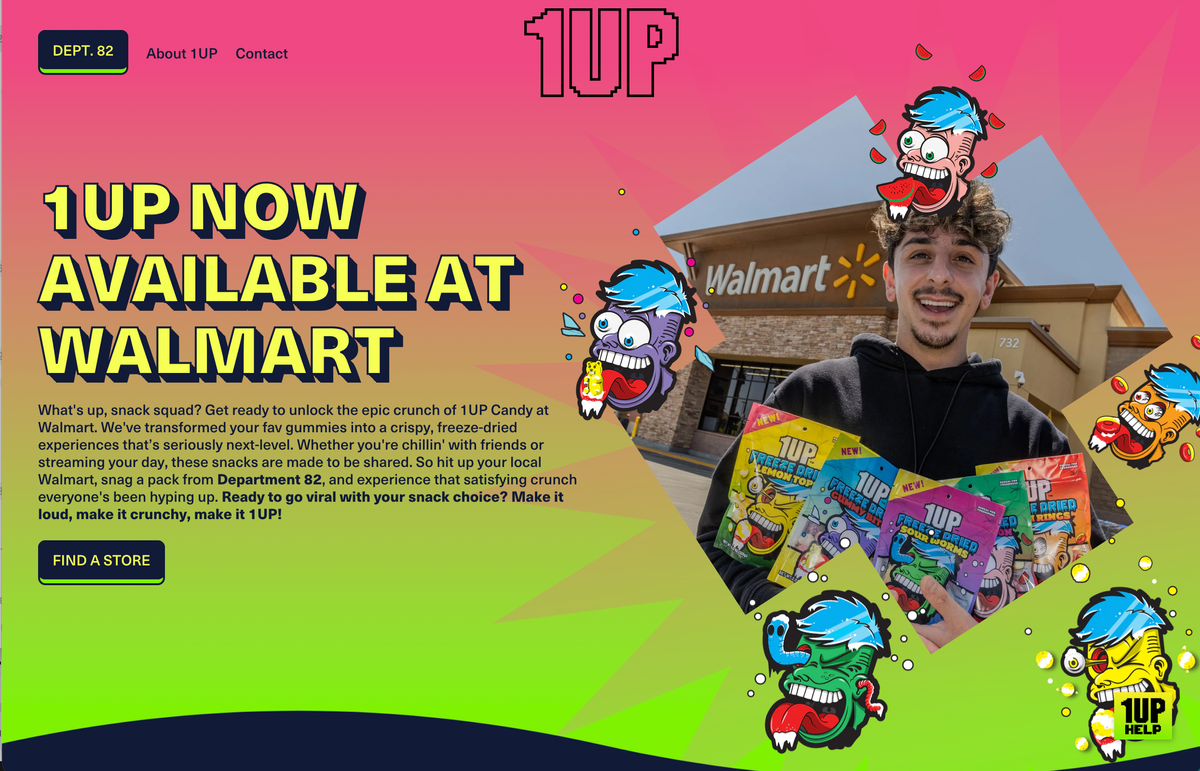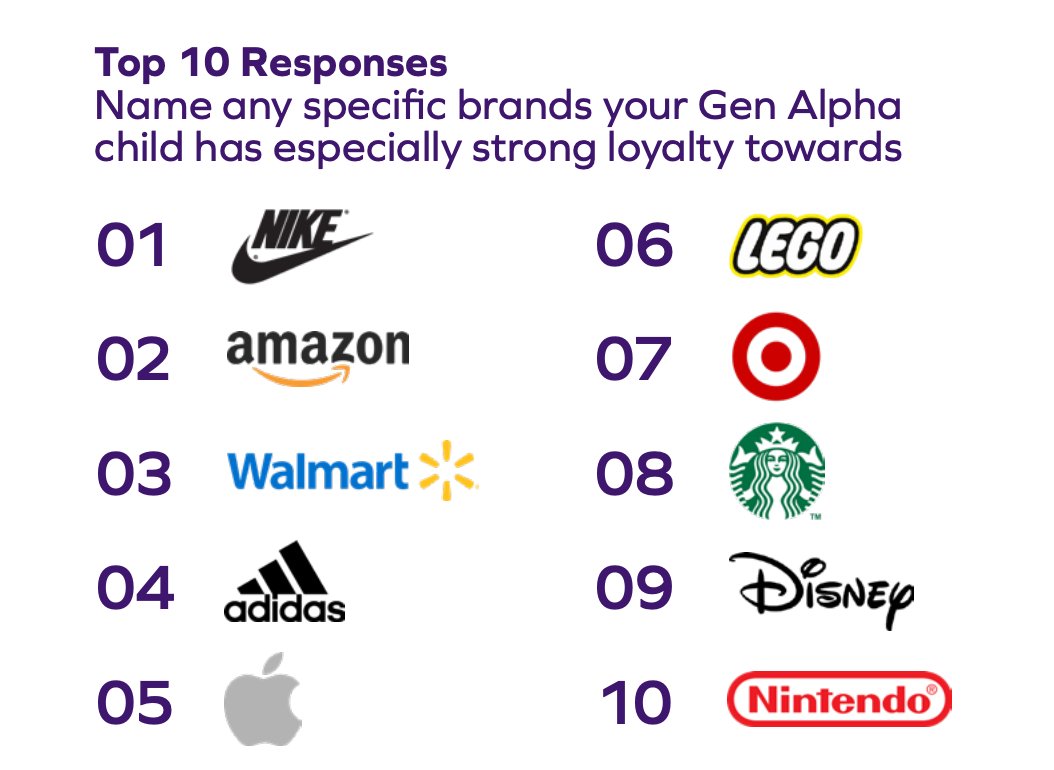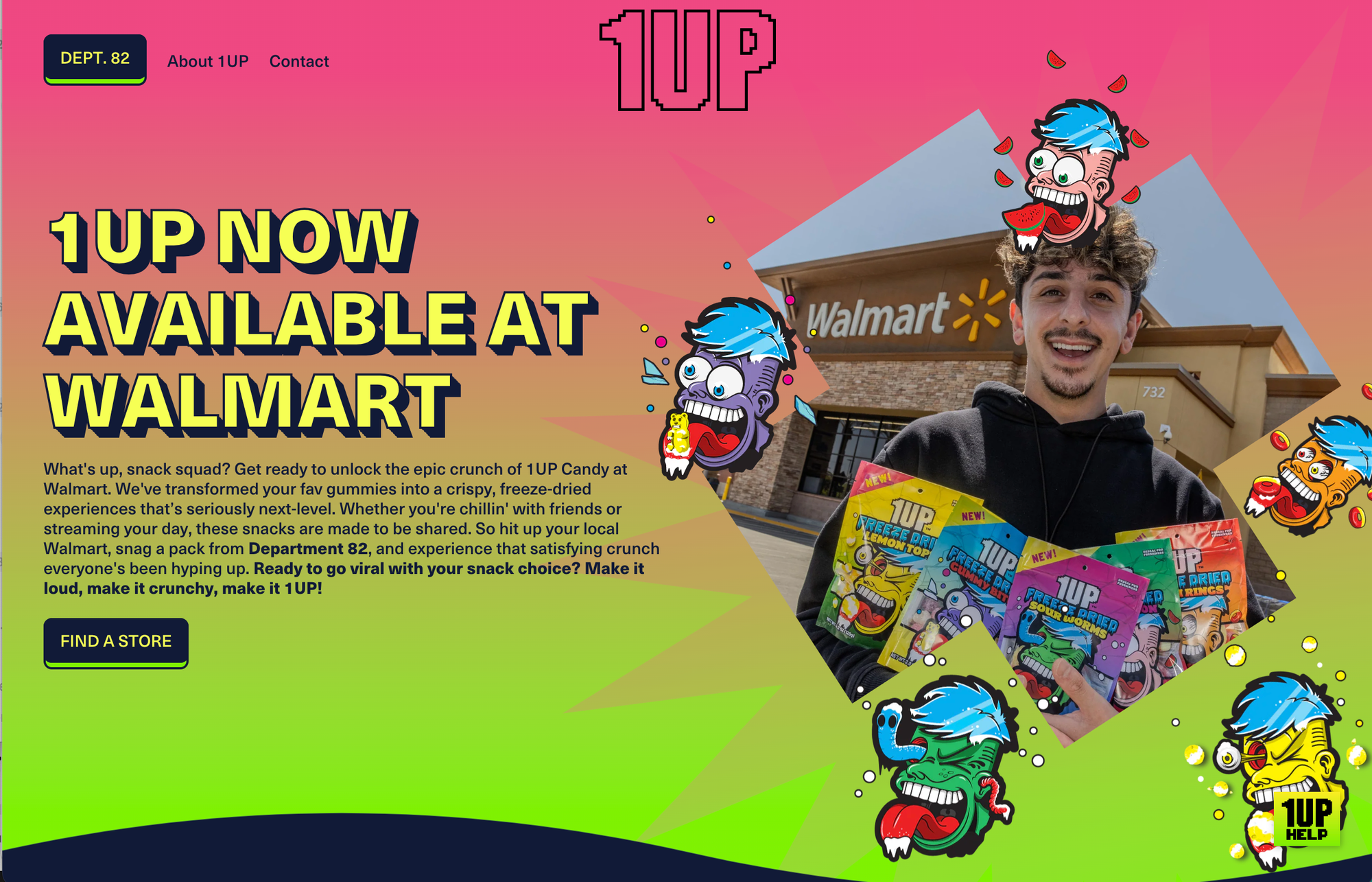Why Creator Brands Are Flocking To Walmart

This post originally appeared in my column for Forbes.com on November 5, 2024
"Creators are the life blood of social commerce and we wanted to get closer to that," Walmart Chief Marketing Officer William White told attendees at the inaugural Forbes Creator Upfronts last week. The event, which brought together major brands and creators to discuss the future of social commerce, marked a significant milestone: the first time a traditional retailer has taken center stage in the creator economy conversation. With Walmart's affiliate program, Walmart Creator, serving as title sponsor, it was a telling signal of how dramatically retail strategy has evolved in the creator economy era.
White's comments reflect more than just marketing speak – they validate a profound shift in how creator-led brands are approaching retail. Rather than following the direct-to-consumer (DTC) playbook of the 2010s, many of today's most successful creator brands are making Walmart their primary launch platform, tapping into the retailer's massive physical footprint and its growing connection with young consumers.
The timing of this strategic shift is notable. DTC as a primary or exclusive sales channel has come under fire lately. Early DTC darlings like Allbirds, Casper, and Peloton are struggling. The cost of new customer acquisition has soared through paid search and social channels, making continued profitable growth challenging for such brands.
Against this backdrop, my own analysis shows a dramatic uptick in the number of creator-led brands choosing Walmart as their launch partner, compared with other big-box retailers, category specialists, and even Direct To Consumer (DTC).
Out of 16 brands launched by large creators between 2012 and 2021, I found that only 4 (25%) of the brands launched in Walmart first. (This includes brands that launched in Walmart and another retailer or DTC simultaneously.)
But for the 3-year period from 2022 to 2024, where 14 large creator brands were launched, 8 (57%) of the retailer-first brands chose Walmart as their retail launch partner.
So how did Walmart reposition itself from middle America big box store, to the retailer favored by buzzy young influencers? The answer lies in several converging trends, and how Walmart is leveraging these as a chance to position itself not only as America’s largest retailer, but the coolest.
The Next Generation of Retail Spending
New research from DKC Analytics helps explain why Walmart's creator strategy is resonating. Gen Alpha children—those born between 2010 and 2024—influence nearly half (49%) of all household spending decisions.
When Gen Alpha discovers brands at Walmart, they're not just influencing their own purchases – they're shifting their millennial parents' shopping behaviors too. An impressive 95% of Gen Alpha parents report learning about new brands, products, or services from their children.
While the typical Gen Alpha child has $45 of their own money to spend weekly ($2,340 annually), they are capable of driving a much larger volume of purchases beyond their pocket money.
The DKC study found that 68% of millennial parents say they're more likely to make online purchases due to their Gen Alpha child's influence. Even more telling 54% say they're more likely to make purchases driven by social media ads or influencers because of their Gen Alpha child.
These stats paint a clear picture of a "Gateway Generation" effect: By winning over Gen Alpha with creator partnerships, Walmart isn't just securing future customers – they're also gaining deeper engagement with millennial parents who control today's household budgets.

Above: A new study from DKC Analytics group shows the brand perceptions of Generation Alpha.
This generation's brand awareness and purchasing influence are reshaping retail dynamics. Unlike previous generations, Gen Alpha sees no contradiction between "cool" creator brands and traditional retail destinations like Walmart.
Walmart is leaning into this opportunity to capture a ‘cradle to grave’ customer. Its Creator program, similar in nature to other retailers’ affiliate programs, was launched in 2022. The retailer investing in education and branding for these creator affiliates, as evidenced by its sponsorship of the Forbes Creator Upfronts this year. There is an argument to say that Walmart could even view its distribution of creator-led brands as a marketing expense, rather than imposing the same commercial terms that it requires of other national brands.
Favor Shifts From DTC to Traditional Retail
The evolution of creator brand 1UP Candy illustrates this new retail playbook. Launching in May 2022 with a traditional DTC website, the brand pivoted to Walmart as its primary retail channel just a year later. Today, the brand's website doesn't even offer direct purchases – instead it directs consumers to find products at their local Walmart stores. The creator, Brian Wadis aka FaZe Rug, regularly features Walmart store visits and employee interactions in his social content, turning the typical Walmart run into a fun and shareable event.

Above: 1Up Candy by Youtuber FaZe Rug initially launched with a DTC model, but now sells exclusively in Walmart Stores.
This strategy stands in stark contrast to the DTC-first approach that dominated creator launches just a few years ago. Other recent success stories reinforce this trend:
- MrBeast's Feastables generated $10 million in revenue within months of its Walmart launch in 2022.
- Prime Hydration, created by Logan Paul and KSI, achieved massive scale through Walmart's national distribution network when it launched in 2022. The company reached $250 million in sales in its first year.
Consumable Products Require Big-Box Logistics
Many creators that serve a mass youth audience gravitate toward launching consumer packaged goods (CPG) products, since these products have wide appeal. The preference for partnering with a big retailer for distribution compared with a DTC model is particularly pronounced in this category, where creator brands are choosing Walmart over DTC for several strategic reasons:
- Perishability: Food and beverage products require sophisticated distribution. Chocolate bars for example are meltable products that require temperature controlled storage and transport.
- Scale Economics: Mass retail provides immediate nationwide reach.
- Purchase Behavior: CPG items benefit from being where consumers already shop for similar products.
- Margins: Margins on CPG products are often slimmer than other categories like wellness and beauty, so a higher volume of sales is required to reach the same net profit as a niche product with a larger profit margin.
Creators in other categories like beauty may have more options when it comes to retail partners for these reasons. With higher profit margins and a smaller overall potential audience, niche brands like Hayley Bieber’s Rhode Skin may choose to pursue a DTC model which allows them to develop a closer relationship to customers and customize each aspect of their brand’s message.
What's Next for Creator Commerce
Walmart's title sponsorship of the Creator Upfronts signals that this is just the beginning of their creator commerce ambitions. The strategy appears to be working on multiple levels – giving creators immediate scale, providing Walmart with cultural relevance, and meeting young consumers where they are.
For creator brands considering their retail strategy, Walmart's emergence as a launch platform represents a significant shift from the DTC-first playbook of the past decade. The success of brands like Feastables, Prime Hydration, and 1UP Candy suggests that for certain categories – particularly CPG – starting with mass retail may be the new path to success.





